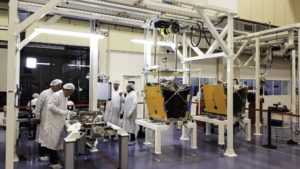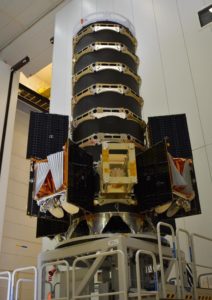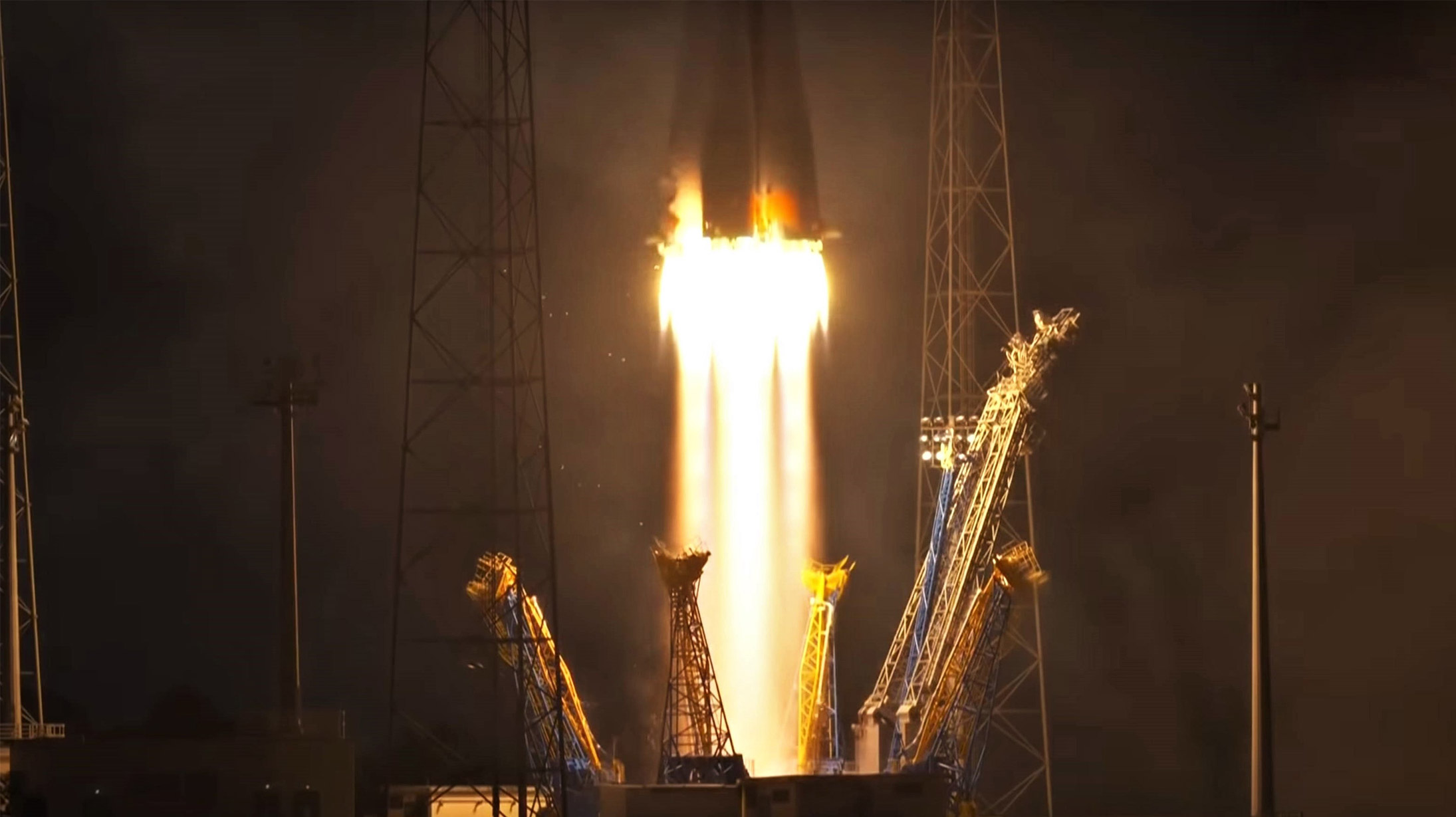

SpaceX
SpaceX’s Starlink space internet gets new competitor with OneWeb satellite launch
The most viable competitor to SpaceX’s Starlink Internet constellation has completed a demonstration launch, placing the first six OneWeb satellites in a circular orbit 1000 km (620 mi) above Earth.
Designed as a constellation of approximately 650-900 satellites, OneWeb aims to provide uninterrupted Internet access across the world with a focus on affordability for those living without a basic communications infrastructure. Assuming OneWeb’s first six spacecraft operate nominally in orbit, the first phase of the company’s constellation could be completed by late 2020 or early 2021, leading to initial operations with customers actually able to access the internet through their spacecraft.
LAUNCH! Soyuz ST-B launches with the first batch of OneWeb satellites.
Follow Along Live:https://t.co/wpIrRq5QwC pic.twitter.com/nUuIs0vkI9
— NSF – NASASpaceflight.com (@NASASpaceflight) February 27, 2019
Compared to OneWeb, SpaceX’s Starlink constellation (even in its earliest phases) is dramatically more expansive, featuring anywhere from 2-7x as many spacecraft and an overall bandwidth that is likely even greater still. As a partial consequence, Starlink spacecraft will likely be more complex and expensive to mass-produce and operate. Combined with optical (laser) interlinks that could make Starlink truly revolutionary, it remains to be seen whether the costs of high-tech solutions can be outweighed by their intrinsic benefits.
6/6 – all 6 of the satellites have successfully separated from the rocket. They will now deploy their solar panels and begin generating power from the sun, to begin their journey to provide #ConnectivityEverywhere #OneWebLaunch
— Eutelsat Group (@EutelsatGroup) February 27, 2019
Thanks to the relative simplicity and lower mass of OneWeb’s spacecraft, as well as a partnership with industry heavyweight Airbus Defence and Space and the partial completion of a Florida-based satellite factory, OneWeb undeniably has several steps up on SpaceX, at least with respect to the goal of reaching initial commercial operations as quickly as possible. SpaceX has already gained experience operating its first two demonstration satellites – known as Tintin A and B – for a full year on-orbit, but all that is known Starlink’s first operational launches is that CEO Elon Musk is dead-set on commencing deployment no later than June 2019. Meanwhile, the status of SpaceX’s production facilities is unclear, with two mid-sized buildings in Redmond, Washington known to be dedicated to the program.
An array of job posts and brief hints from primary and secondary sources indicate that the Starlink program is already heavily focused on ramping up spacecraft production after several years of development. It’s unclear if a planned second set of prototype satellites is still on the books, hinted at by Musk in the months after the first pair’s February 2018 launch debut.
- OneWeb’s preliminary satellite production line. (OneWeb)
- A visualization of satellite deployment on-orbit. (Arianespace)
- OneWeb’s first Soyuz 2 fairing. (Arianespace)
- SpaceX’s first two Starlink prototype satellites are pictured here before their inaugural launch, showing off a thoroughly utilitarian bus and several advanced components. (SpaceX)
Aside from the satellites themselves, prospective global internet constellation operators must face the equally critical and challenging task of developing a simultaneously high-performance and low-cost user terminal, the antenna and associated electronics that turn spacecraft signals into an accessible and reliable internet connection. SpaceX’s work in this direction has been silent, while OneWeb founder Greg Wyler recently began teasing and describing the company’s own work in that direction, hinting that his team has already arrived at a $15 antenna prototype capable of supporting 20-60 Mbps (megabits per second).
First two Starlink demo satellites, called Tintin A & B, deployed and communicating to Earth stations pic.twitter.com/TfI53wHEtz
— Elon Musk (@elonmusk) February 22, 2018
Meanwhile, the hopeful success of the company’s first launch will pave the way for the first full launch of OneWeb spacecraft, potentially as many as 32-36 at once on Arianespace’s Russian Soyuz 2 launch vehicle. OneWeb has 21 launches manifested on Soyuz 2 rockets, scheduled to occur at a more or less monthly cadence between the first operational launch and the completion of Phase 1’s 650-satellite constellation. Shortly after the first launch was completed, Arianespace CEO Stéphane Israël announced that it had struck a deal with OneWeb as the official customer for the first two launches of its Ariane 6 rocket, meant to debut as early as 2020.
Check out Teslarati’s newsletters for prompt updates, on-the-ground perspectives, and unique glimpses of SpaceX’s rocket launch and recovery processes!
News
SpaceX launches Ax-4 mission to the ISS with international crew
The SpaceX Falcon 9 launched Axiom’s Ax-4 mission to ISS. Ax-4 crew will conduct 60+ science experiments during a 14-day stay on the ISS.
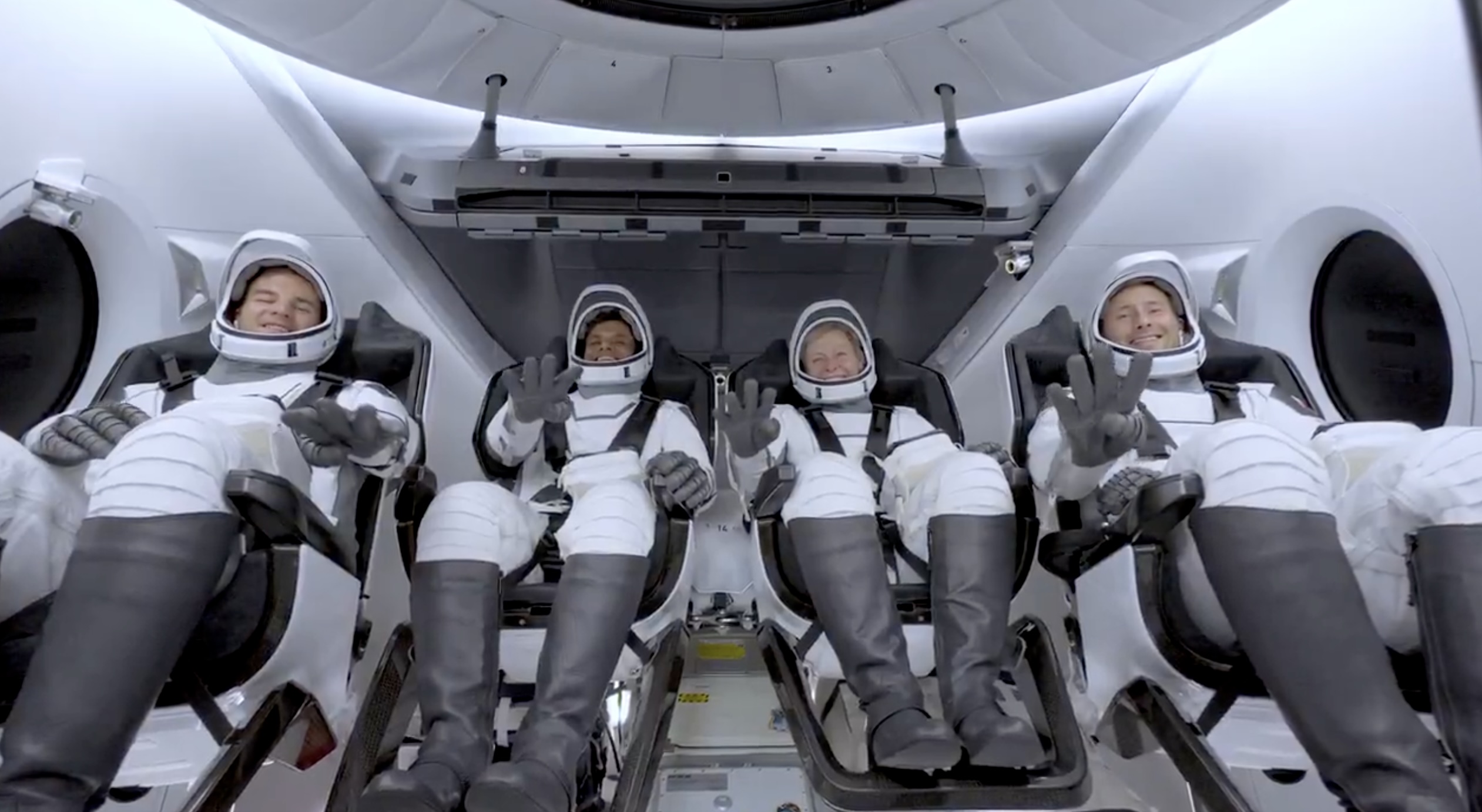
SpaceX launched the Falcon 9 rocket kickstarting Axiom Space’s Ax-4 mission to the International Space Station (ISS). Axiom’s Ax-4 mission is led by a historic international crew and lifted off from Kennedy Space Center’s Launch Complex 39A at 2:31 a.m. ET on June 25, 2025.
The Ax-4 crew is set to dock with the ISS around 7 a.m. ET on Thursday, June 26, 2025. Axiom Space, a Houston-based commercial space company, coordinated the mission with SpaceX for transportation and NASA for ISS access, with support from the European Space Agency and the astronauts’ governments.
The Ax-4 mission marks a milestone in global space collaboration. The Ax-4 crew, commanded by U.S. astronaut Peggy Whitson, includes Shubhanshu Shukla from India as the pilot, alongside mission specialists Sławosz Uznański-Wiśniewski from Poland and Tibor Kapu from Hungary.
“The trip marks the return to human spaceflight for those countries — their first government-sponsored flights in more than 40 years,” Axiom noted.
Shukla’s participation aligns with India’s Gaganyaan program planned for 2027. He is the first Indian astronaut to visit the ISS since Rakesh Sharma in 1984.
Axiom’s Ax-4 mission marks SpaceX’s 18th human spaceflight. The mission employs a Crew Dragon capsule atop a Falcon 9 rocket, designed with a launch escape system and “two-fault tolerant” for enhanced safety. The Axiom mission faced a few delays due to weather, a Falcon 9 leak, and an ISS Zvezda module leak investigation by NASA and Roscosmos before the recent successful launch.
As the crew prepares to execute its scientific objectives, SpaceX’s Ax-4 mission paves the way for a new era of inclusive space research, inspiring future generations and solidifying collaborative ties in the cosmos. During the Ax-4 crew’s 14-day stay in the ISS, the astronauts will conduct nearly 60 experiments.
“We’ll be conducting research that spans biology, material, and physical sciences as well as technology demonstrations,” said Whitson. “We’ll also be engaging with students around the world, sharing our experience and inspiring the next generation of explorers.”
SpaceX’s Ax-4 mission highlights Axiom’s role in advancing commercial spaceflight and fostering international partnerships. The mission strengthens global space exploration efforts by enabling historic spaceflight returns for India, Poland, and Hungary.
News
Starlink Cellular’s T-Mobile service to grow with third-party app data
From Oct 2025, T-Satellite will enable third-party apps in dead zones! WhatsApp, X, AccuWeather + more coming soon.
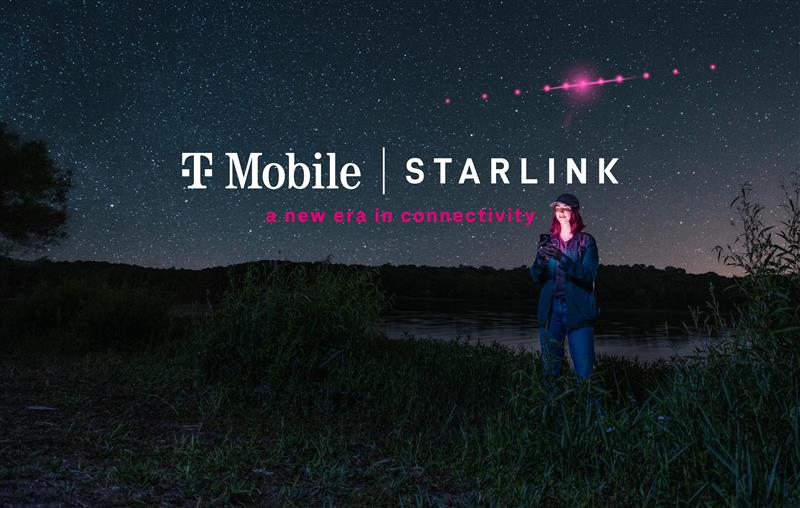
Starlink Cellular’s T-Mobile service will expand with third-party app data support starting in October, enhancing connectivity in cellular dead zones.
T-Mobile’s T-Satellite, supported by Starlink, launches officially on July 23. Following its launch, T-Mobile’s Starlink Cellular service will enable data access for third-party apps like WhatsApp, X, Google, Apple, AccuWeather, and AllTrails on October 1, 2025.
T-Mobile’s Starlink Cellular is currently in free beta. T-Satellite will add MMS support for Android phones on July 23, with iPhone support to follow. MMS support allows users to send images and audio clips alongside texts. By October, T-Mobile will extend emergency texting to all mobile users with compatible phones, beyond just T-Mobile customers, building on its existing 911 texting capability. The carrier also provides developer tools to help app makers integrate their software with T-Satellite’s data service, with plans to grow the supported app list.
T-Mobile announced these updates during an event celebrating an Ookla award naming it the best U.S. phone network, a remarkable turnaround from its last-place ranking a decade ago.
“We not only dream about going from worst to best, we actually do it. We’re a good two years ahead of Verizon and AT&T, and I believe that lead is going to grow,” said T-Mobile’s Chief Operating Officer Srini Gopalan.
T-Mobile unveiled two promotions for its Starlink Cellular services to attract new subscribers. A free DoorDash DashPass membership, valued at $10/month, will be included with popular plans like Experience Beyond and Experience More, offering reduced delivery and service fees. Meanwhile, the Easy Upgrade promotion targets Verizon customers by paying off their phone balances and providing flagship devices like the iPhone 16, Galaxy S25, or Pixel 9.
T-Mobile’s collaboration with SpaceX’s Starlink Cellular leverages orbiting satellites to deliver connectivity where traditional networks fail, particularly in remote areas. Supporting third-party apps underscores T-Mobile’s commitment to enhancing user experiences through innovative partnerships. As T-Satellite’s capabilities grow, including broader app integration and emergency access, T-Mobile is poised to strengthen its lead in the U.S. wireless market.
By combining Starlink’s satellite technology with strategic promotions, T-Mobile is redefining mobile connectivity. The upcoming third-party app data support and official T-Satellite launch mark a significant step toward seamless communication, positioning T-Mobile as a trailblazer in next-generation wireless services.
News
Starlink expansion into Vietnam targets the healthcare sector
Starlink aims to deliver reliable internet to Vietnam’s remote clinics, enabling telehealth and data sharing.

SpaceX’s Starlink expansion into Vietnam targets its healthcare sector. Through Starlink, SpaceX seeks to drive digital transformation in Vietnam.
On June 18, a SpaceX delegation met with Vietnam’s Ministry of Health (MoH) in Hanoi. SpaceX’s delegation was led by Andrew Matlock, Director of Enterprise Sales, and the discussions focused on enhancing connectivity for hospitals and clinics in Vietnam’s remote areas.
Deputy Minister of Health (MoH) Tran Van Thuan emphasized collaboration between SpaceX and Vietnam. Tran stated: “SpaceX should cooperate with the MoH to ensure all hospitals and clinics in remote areas are connected to the StarLink satellite system and share information, plans, and the issues discussed by members of the MoH. The ministry is also ready to provide information and send staff to work with the corporation.”
The MoH assigned its Department of Science, Technology, and Training to work with SpaceX. Starlink Vietnam will also receive support from Vietnam’s Department of International Cooperation. Starlink Vietnam’s agenda includes improving internet connectivity for remote healthcare facilities, developing digital infrastructure for health examinations and remote consultations, and enhancing operational systems.
Vietnam’s health sector is prioritizing IT and digital transformation, focusing on electronic health records, data centers, and remote medical services. However, challenges persist in deploying IT solutions in remote regions, prompting Vietnam to seek partnerships like SpaceX’s.
SpaceX’s Starlink has a proven track record in healthcare. In Rwanda, its services supported 40 health centers, earning praise for improving operations. Similarly, Starlink enabled remote consultations at the UAE’s Emirati field hospital in Gaza, streamlining communication for complex medical cases. These successes highlight Starlink’s potential to transform Vietnam’s healthcare landscape.
On May 20, SpaceX met with Vietnam’s Ministry of Industry and Trade, announcing a $1.5 billion investment to provide broadband internet, particularly in remote, border, and island areas. The first phase includes building 10-15 ground stations across the country. This infrastructure will support Starlink’s healthcare initiatives by ensuring reliable connectivity.
Starlink’s expansion in Vietnam aligns with the country’s push for digital transformation, as outlined by the MoH. By leveraging its satellite internet expertise, SpaceX aims to bridge connectivity gaps, enabling advanced healthcare services in underserved regions. This collaboration could redefine Vietnam’s healthcare infrastructure, positioning Starlink as a key player in the nation’s digital future.
-

 News5 days ago
News5 days agoTesla Robotaxi’s biggest challenge seems to be this one thing
-
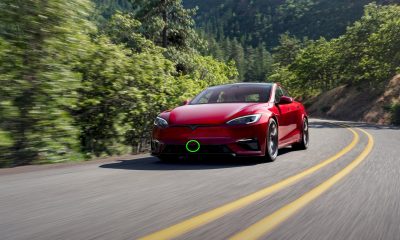
 News2 weeks ago
News2 weeks agoTesla confirms massive hardware change for autonomy improvement
-

 Elon Musk2 weeks ago
Elon Musk2 weeks agoElon Musk slams Bloomberg’s shocking xAI cash burn claims
-
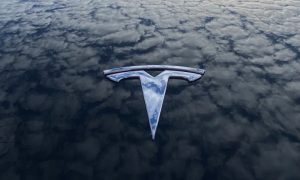
 News2 weeks ago
News2 weeks agoTesla features used to flunk 16-year-old’s driver license test
-

 News2 weeks ago
News2 weeks agoTesla China roars back with highest vehicle registrations this Q2 so far
-

 News2 weeks ago
News2 weeks agoTexas lawmakers urge Tesla to delay Austin robotaxi launch to September
-

 News2 weeks ago
News2 weeks agoTesla dominates Cars.com’s Made in America Index with clean sweep
-

 News2 weeks ago
News2 weeks agoTesla’s Grok integration will be more realistic with this cool feature

